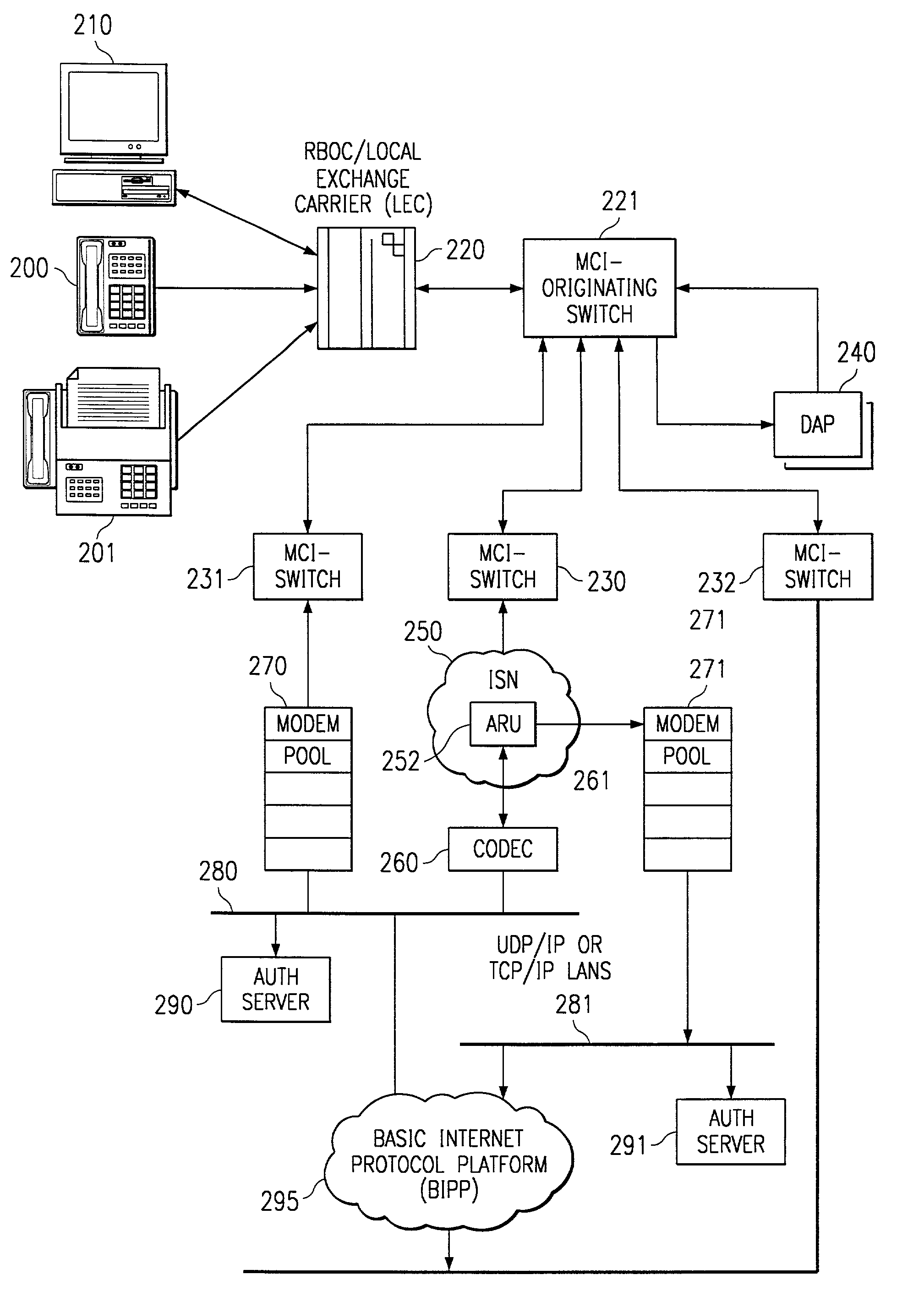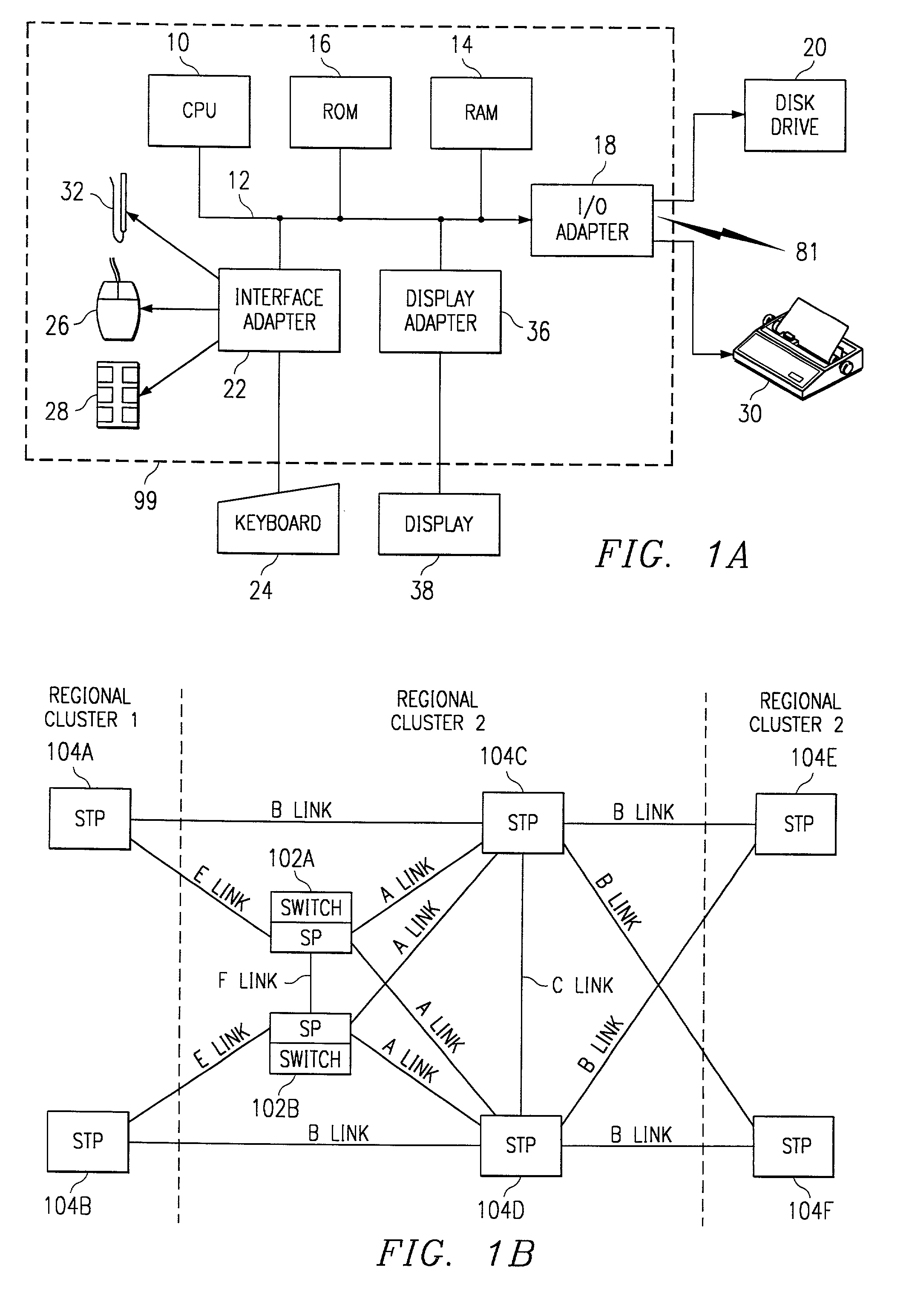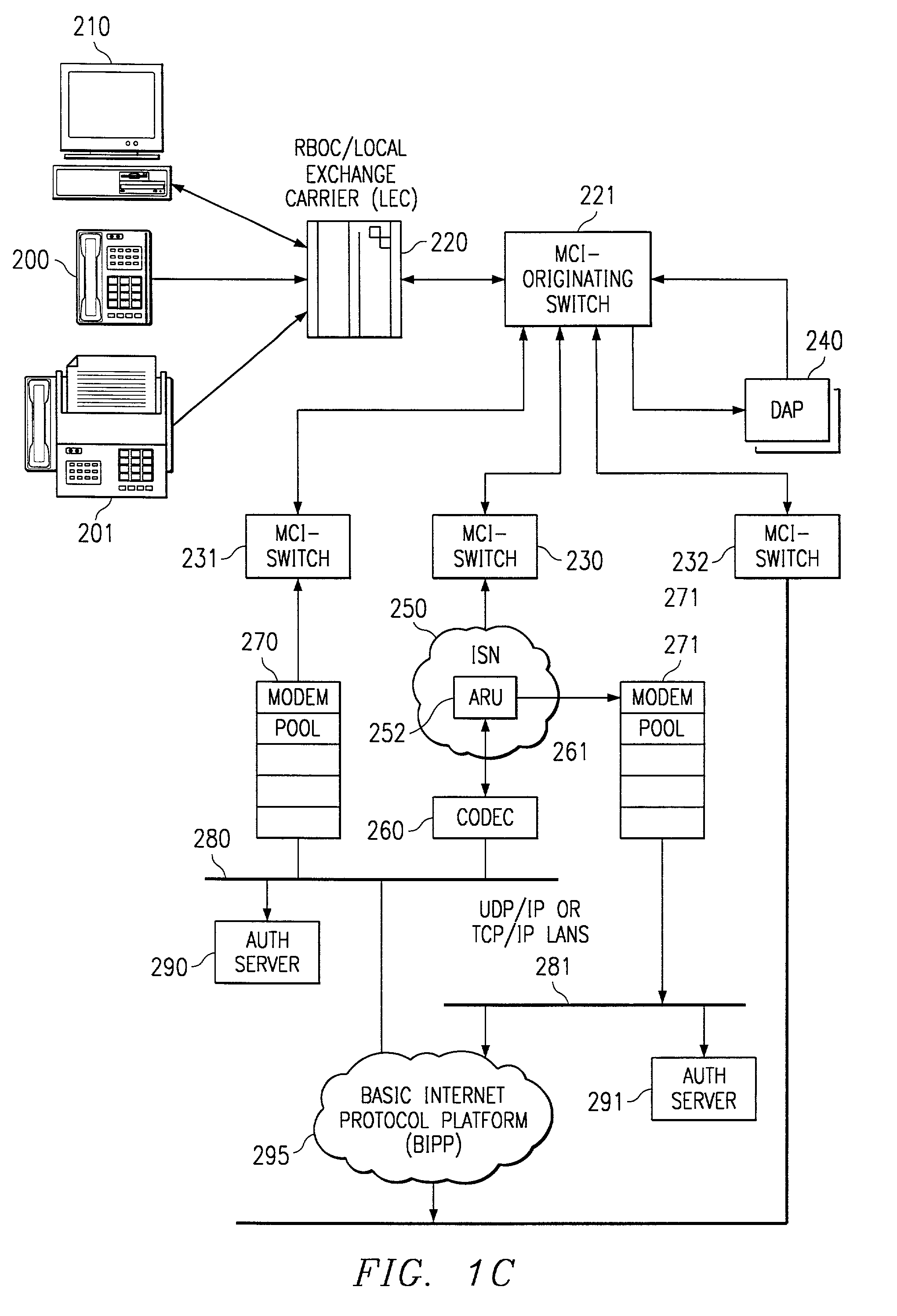Pure
packet switching technology is not conducive to carrying voice transmissions because such transfers demand more stable bandwidth.
The switch is a special purpose bridging switch with limited
programming capabilities and complex interface.
Addition of new services on the switch is very difficult and sometimes not possible.
The service logic itself is generally not enough to execute a service 2200 in the network.
There are cases where a certain LRM can not allocate a resource because all local resources are busy or because the requested resource belongs to another locale.
The ability to change a piece of information in one place and have it automatically distributed ISP—wide is a powerful tool that has not been possible with the current ISP management framework.
A failure will result in the user being directed to Microsoft Internet Explorer V3.0 or later.If the browser successfully displays Frames and runs
Java, then this page will automatically request the Welcome
Server 450 to send a login page.
A failure at this stage results in an Access Failed page.
Some services are not accessible by our users.
The NIDSCOMM and ASCOMM services do not allow
connectivity to databases not physically located on the NIDS
Server.
Through the PC
Client, the user is limited to message retrieval and message manipulation.
The forward feature is limited to distributing messages as either voicemails or faxmails.
Subscribers also have the ability to access additional information content through the ARU interface; however, this information is not configurable through the WWW Browser (i.e.,
Profile Management).
However, the
ceramic piston engine object overrides these
ceramic specific thermal characteristics, which are typically different from those associated with a
metal piston.
In fact, our logical
perception of the reality is the only limit on determining the kinds of things that can become objects in object-oriented
software.
Libraries of reusable classes are useful in many situations, but they also have some limitations.
In a
complex system, the class hierarchies for related classes can become extremely confusing, with many dozens or even hundreds of classes.?
Inevitably, similar pieces of code end up doing similar things in slightly different ways and do not work as well together as they should.
As programs grow more complex, more programmers are forced to reinvent basic solutions to basic problems over and over again.
This framework is more complex and consists of significant collections of collaborating classes that capture both the small scale patterns and major mechanisms that implement the common requirements and design in a specific
application domain.
This presents both a challenge and an opportunity for established carriers like MCI and BT especially in the International Direct Distance Dialing (IDDD) arena.
At issue in the longer term is the steady improvement in quality for Internet
telephony and whether this will ultimately prove competitive with conventional voice services.
The voice quality across the Internet is good, but not as good as typical telephone
toll quality.
In addition, there are significant delays experienced during the conversation.
Trying to interrupt a speaker in such an environment is problematic.
One of the biggest contributors to delays is the
sound card used.
Long audio data buffers which helped ensure uninterrupted audio playback introduced real
time delays.
Also there is
delay inherent in filling a packet with digitized encoded audio.
Shorter packets reduce packet-filling delays, but increase overhead by increasing the packet header to
packet payload data ratio.
The increased overhead also increases the bandwidth demands for the application, so that an application which uses short packets may not be able to operate on a 14.4 kbps dial-up connection.
LAN-based PCs suffer less
delay, but everyone is subject to variable delays which can be annoying.
Lastly, there are delays inherent in audio codecs.
Clearly the use of the Internet to provide international voice calls is a potential
threat to the traditional International Direct Distance Dialing (IDDD) revenue
stream.
Although it may be several years before there is an appreciable revenue
impact, it cannot be stopped, except perhaps within national borders on the basis of regulation.
Since IP addresses are not necessarily fixed, one cannot rely on them to identify parties.
Such a service could have a duration and or volume fee associated with it, which might limit the desirability of its use.
If this comes to pass the
life span of the translation services will be short, probably making them not economically attractive.
This will cause a problem only if the user can run more than one IP phone
package at the same time.
There may still be some timing problems between distributed parts of the
directory service.)
It is unlikely that the international case will exist in practice due to the cost.
However, there is nothing to preclude that case and it requires no additional functionality to perform.
This will add complications with respect to billing.
One problem is how to
handle the case where there is no “local” dial out unit.
Another problem is what to do if the “local” out dial unit is full or otherwise not available.
The third approach will probably add to the
customer support load and result in unhappy customers.
The first approach is simple but restrictive.
Approach two affords flexibility for the times the customer wants to proceed anyway, but it adds complexity to the operation.
This is not an attractive service since it saves no money over the customer making an international
telephone call himself.
This situation is problematic for it must be agreed to by the carrier at the international destination.
The calling number will not always be available, for technological or privacy reasons.
A major open issue is how the caller will specify the destination at the second dial tone.
All this will get more complicated when number portability becomes required.
The problem is that the destination PSTN number needs to be entered and, somehow, it needs to be indicated that the destination is to be reached via the Internet rather than the conventional long distance network.
Although many will do this to save money, requiring any extra dialing will reduce the total number of users of the service.
Although routers are much cheaper than telephone switches, they have much less capacity.
Building
large networks with small building blocks gets not only expensive, but quickly reaches points of diminishing returns.
We need to wait for the technology of routers to improve.2. The second issue raised above was that of bandwidth usage.
First, bandwidth is cheap, at least, when there is spare
fiber in the ground.
Once the last strand is used the next bit per second is very expensive.
Second, on transoceanic routes, where bandwidth is much more expensive, we are already doing
bandwidth compression of voice to 9.6 kbps.
This will have a significant effect on the capital and recurring costs of the Internet.
An obvious complication will arise when number portability becomes required.
Timing issues related to FAX protocols make this a more difficult offering in some ways.
This means that the Internet
Telephony Gateway cannot use SS7 signaling to communicate with the switch, it must simply outpulse the VNET number to be dialed.
As with any
telecommunications network, an SS7 network is vulnerable to
fiber cuts, other transmission outages, and device failures.
Configuration of these systems usually requires that the system be down for a period of time.
Because prior art systems only operate with data received from proprietary PMUs 106, they do not provide correlation between PMU events and events generated from other types of SS7 network elements.
For example, an SS7 link may
shut down momentarily with the possibility of functioning again within a few seconds, or it may be down for a much greater period of time due to a serious outage that requires action.
 Login to View More
Login to View More  Login to View More
Login to View More 


